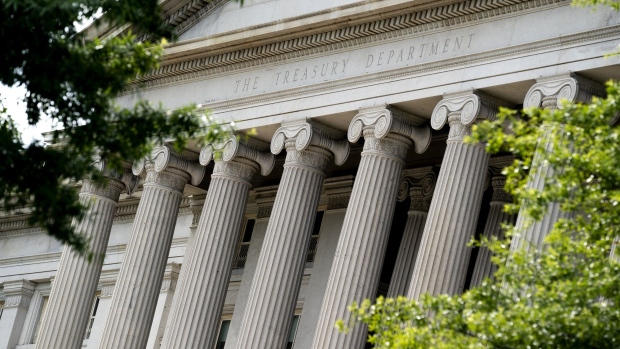Sep 21, 2023
Treasury Buyback Plan Will Boost Market Resilience, US Debt Official Says
, Bloomberg News

(Bloomberg) -- The resilience of the world’s biggest bond market is top priority as US debt officials prepare to start buying back government debt, according to Josh Frost, the Treasury Department’s assistant secretary for financial markets.
“Buybacks can play an important role in helping to make the Treasury market more liquid and resilient,” Frost said Thursday in a prepared speech during a forum on the Treasury market in New York. Our goal is to “ensure that the Treasury market remains the deepest and most liquid market in the world.”
The Treasury is expected in 2024 to start regularly purchasing its bonds for the first time in more than two decades, a move that comes after years of increasing scrutiny on Wall Street about the $25 trillion market’s underlying fragility. The programs have two separate objectives: to bolster liquidity in some pockets of the market and to smooth the volatility of bill issuance as it manages its cash balance.
Officials had been exploring the buybacks for at least a year and unveiled additional details on the structure last month. But market liquidity has drawn scrutiny since at least October 2014, when Treasuries convulsed — with no apparent trigger — in what was dubbed a flash rally. Some measures pushed through since 2014 include boosting public reporting on daily Treasury transactions.
More recently, a near freeze of the market in March 2020 forced the Federal Reserve into massive purchases to prevent wider financial disruptions. That shock and other disruptions have led various regulators to seek improvements through an inter-agency working group.
Frost said the Treasury’s liquidity-focused buybacks were not intended to address periods of acute market stress, a responsibility that falls under the Fed’s mandate to ensure financial-market stability.
Instead, dealers should feel the bump from buybacks in their intermediation capacity in normal times, as well as when there’s outsized trading activity, said Frost, who spoke at an event co-sponsored by the International Swaps Derivatives Association and the Securities Industry and Financial Markets Association.
The department intends to be more “price sensitive” as it chooses the buyback offers to accept — and therefore may end up purchasing “materially” less then the maximum, he said.
“Buybacks can help improve the liquidity of the Treasury market by providing a regular opportunity for market participants to sell back to Treasury off-the-run securities across the yield curve,” he said. “This should improve the willingness of investors and intermediaries to trade and provide liquidity in these securities, all else equal, knowing there is a potential outlet to sell some of their off-the-run holdings.”
Just in August, the Treasury announced the first increase in the sale of notes and bonds in over in over two-and-a-half years to address a growing fiscal deficit and the lack of support from the Fed as the central bank rolls debt off its balance sheet through quantitative tightening.
The buybacks to support cash-management flows, meanwhile, are intended to reduce the volatility in the Treasury’s cash balance and regular bill issuance, according to Frost.
“Volatility can be costly to the taxpayer by causing imbalances between supply and demand and by potentially hindering the smooth functioning of the bill market,” he said.
©2023 Bloomberg L.P.






